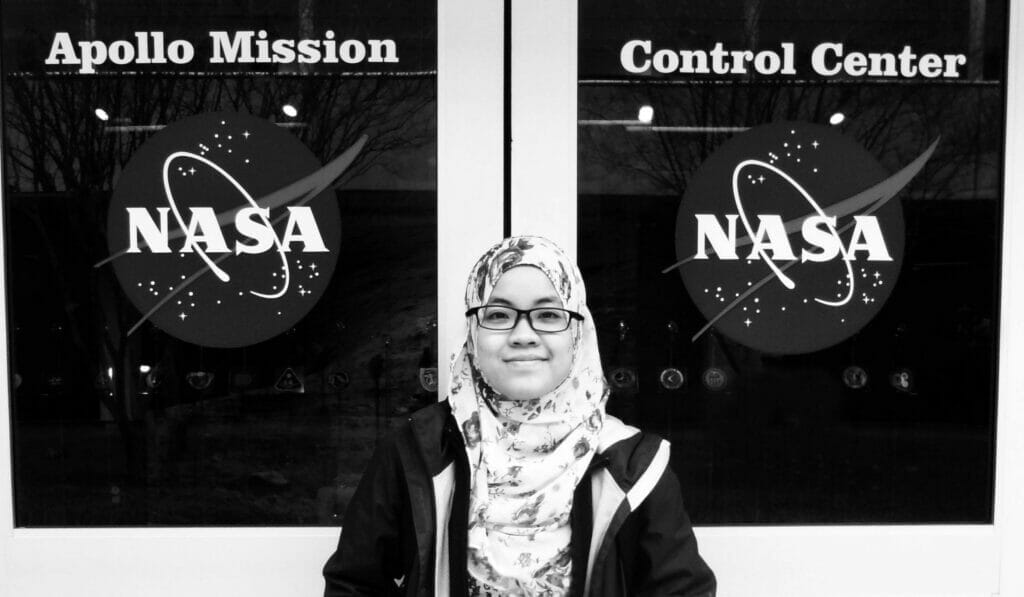DR NUR ADLYKA AINUL ANNUAR
Dr Adylka, 29, was amongst a pioneer team of astronomers that uncovered a hidden supermassive black hole within the spiral galaxy NGC 1448.
What drew you to the field of astrophysics? Was your interest in space one that grew from childhood?
Yes, I started to grow an interest in astronomy when I was 11 years old after learning about the Solar System at school. I find the field very fascinating and intriguing. However, it was not until 2 years later that I decided to really pursue astronomy and become an astrophysicist, after I was inspired by two astronomy-related movies – Armageddon and Apollo 13.
Why did your team choose to investigate NGC 1448, and what did you find at the centre of the galaxy that led you to discover the hidden supermassive black hole?
There has been evidence for the presence an active supermassive black hole at the centre of the galaxy (NGC 1448) by previous work. So, we followed up the study to gather more evidence and learn more about the black hole. We collected data from various international telescopes at different wavelengths, and proved that there is indeed an actively accreting supermassive black hole at the centre of the galaxy, and it is hidden from our direct view, leading to the reason as to why it was not discovered until now.
What is the difference between a black hole and a supermassive black hole?
Black hole is a general term used to describe a region of space in which gravity is so extreme, that nothing can escape from its pull, not even light. Black holes can be categorised into three types according to their masses: stellar-mass black hole (~5-10x the mass of our Sun), intermediate mass black hole (~100-10 000x the mass of our Sun), and supermassive black hole (>1 million times the mass of our Sun). Supermassive black holes are believed to occupy the hearts of every massive galaxies in our universe.
What do you think will be the after effect of the discovery of these supermassive black holes within the field of astrophysics?
Many new hidden black holes have been uncovered during the past several years, thanks to the developments in technology that have allowed us to have instruments with better sensitivity and capabilities. These discoveries ,will in general, provide us with better understanding of supermassive black holes and the effects that they have towards the galaxies that they occupy. This in turn will allow us to understand the supermassive black hole in our very own galaxy, and how it will affect our galaxy.
Are you still focused on researching supermassive black holes, or have you moved on to study other related cosmic objects?
Yes, my primary research focus currently is still supermassive black holes as there are so many things yet to be understood about them.
Setting strides for future Malaysians, what advice would you give to the younger generation who are keen in following in your footsteps?
People might assume that this is quite a risky field to pursue given the limited career prospects in Malaysia, but I believe in the power of dreams and we will be successful when we do something that we love. So, my advice would be to believe in your dreams, focus and pursue it no matter what. Contrary to what people think, there are actually quite broad career prospects in astronomy, even in Malaysia.

TEXT NEDA AL-ASEDI & SWAROOPINI UDHAYA NAIR
PHOTOGRAPHYÂ ROBIN LIEW
ART DIRECTIONÂ AUDREY LIM


